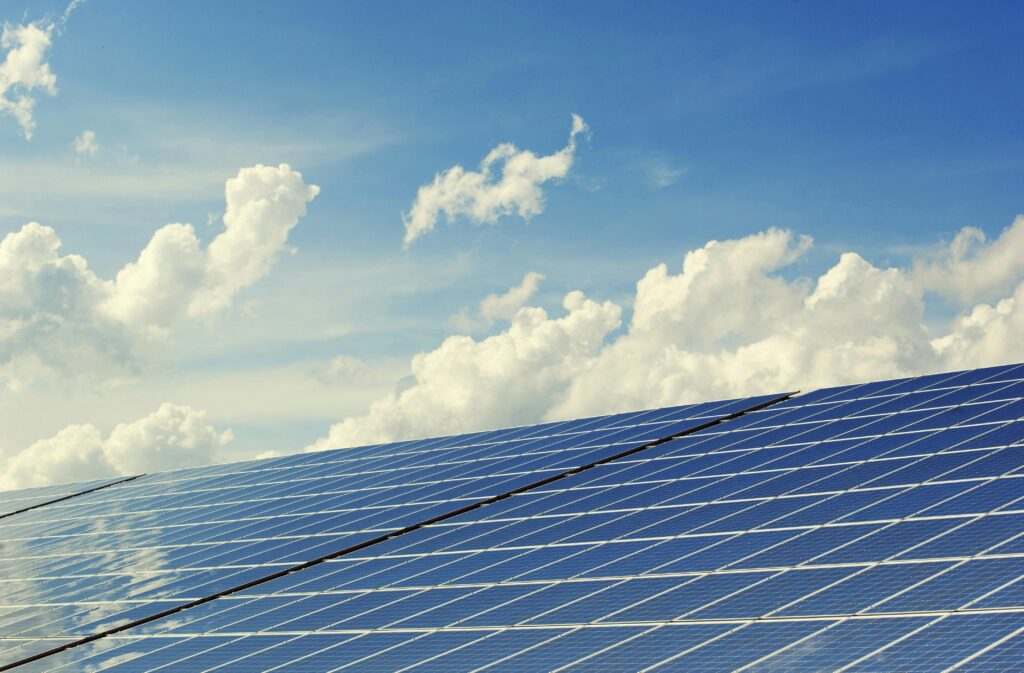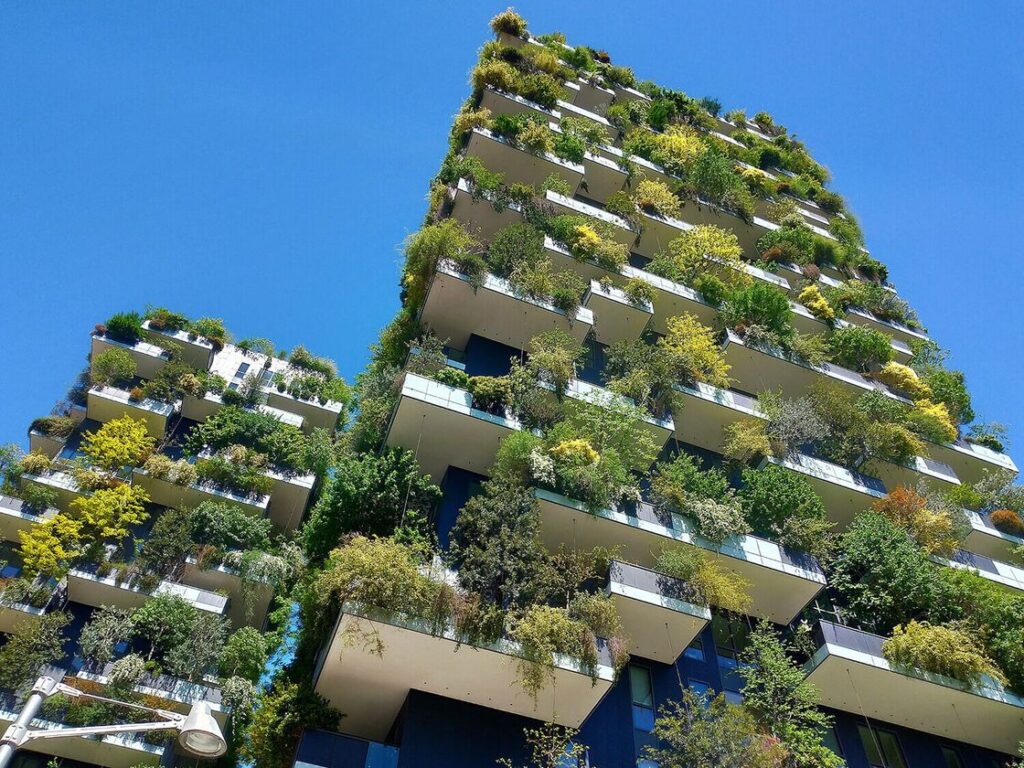Index
Eco-friendly homes represent a concrete response to the environmental challenges of our time, providing living solutions that respect the environment and promote sustainability. As awareness about the impact of human activities on the planet grows, interest in homes that reduce the use of non-renewable resources and minimize carbon emissions is growing. This type of housing not only offers ecological benefits, but also brings long-term economic advantages, thanks to greater energy efficiency and reduced operating costs. In this document, we will explore the key characteristics of green homes, the innovative materials used, and the cutting-edge technologies that make them an essential pillar of a greener and more sustainable future.
Introduction to Green Homes
What is a green home?
A green home is a structure designed to reduce environmental impact throughout its entire life cycle, from construction to daily use. These homes use sustainable materials and technologies that optimize energy and water consumption, minimizing carbon emissions. Particular attention is paid to thermal insulation, the use of renewable energy sources such as solar panels, and efficient heating and cooling systems. Furthermore, eco-friendly homes often incorporate green spaces and rainwater harvesting systems to promote biodiversity and reduce the waste of natural resources.These homes are not only a response to environmental needs, but also represent an investment in improving the quality of life and reducing energy costs for residents.
[cta-casavo title="Looking for a home? We'll find it for you." text=""]
Importance of sustainable homes
Sustainable homes play a crucial role in the fight against climate change and promoting an ecologically responsible future. These homes help reduce the consumption of natural resources and greenhouse gas emissions, which are among the main causes of global warming. By adopting sustainable construction practices, the use of recycled and renewable materials is encouraged, reducing dependence on non-renewable resources. Furthermore, green homes improve the quality of life of their inhabitants, offering healthier and more comfortable indoor environments. Even from an economic standpoint, these homes represent an advantage, as they reduce energy costs and increase property value over time. Investing in sustainable homes also means preparing for future environmental regulations, becoming pioneers of a lifestyle more harmonious with nature.
Benefits for the environment
Eco-friendly homes offer numerous environmental benefits, contributing significantly to the reduction of the ecological footprint. Using sustainable and recycled materials in construction reduces the amount of waste that ends up in landfills and limits the extraction of natural resources. Furthermore, the adoption of renewable energy technologies, such as solar panels and geothermal systems, decreases dependence on fossil fuels and reduces greenhouse gas emissions. Installing rainwater harvesting and graywater recycling systems helps conserve water resources and reduce waste.Effective insulation and the use of efficient heating and cooling technologies also reduce overall energy consumption, further minimizing environmental impact. In short, green homes represent an integrated solution for living in harmony with our planet, promoting long-term sustainability.
Sustainable materials for homes
Certified and biodegradable wood

Certified and biodegradable wood is one of the most sustainable materials used in eco-friendly homes. Sourced from responsibly managed forests according to certification standards such as FSC (Forest Stewardship Council), this wood ensures that deforestation is minimized and that reforestation practices are strictly followed. Wood is a naturally renewable material and, when used in construction, reduces the use of energy-intensive materials such as concrete and steel. Furthermore, wood has excellent insulating properties, helping to reduce energy consumption for heating and cooling. Being biodegradable, certified wood, at the end of its life, does not contribute to the accumulation of non-decomposable waste, but returns to the earth's natural cycle. In conclusion, the use of certified wood not only conserves natural resources but also contributes to a healthier and more sustainable living environment.
Rammed Earth Bricks
Rammed earth bricks are an eco-friendly and sustainable choice for home construction. Made from a mixture of clay, sand, and straw, these bricks offer excellent thermal insulation properties, helping to maintain a stable internal temperature and thus reducing the need for artificial heating and cooling. The production of rammed earth bricks requires much less energy than traditional fired bricks, thus reducing the carbon emissions associated with the production process. Furthermore, rammed earth is an abundant and readily available material, making it a long-term sustainable resource. Using rammed earth bricks also promotes the breathability of walls, preventing humidity problems and improving indoor air quality. In short, rammed earth bricks are a practical and eco-friendly solution for those looking to build eco-friendly homes.
Natural Insulators
Natural insulators are essential in eco-friendly homes to ensure optimal energy efficiency and reduce reliance on artificial heating and cooling systems. Materials such as sheep's wool, wood fiber, cork, and hemp are among the most common and sustainable insulation options. These materials not only offer excellent insulating properties, but are also biodegradable and do not release harmful substances into the environment. Sheep's wool, for example, has the ability to regulate indoor humidity, improving air quality. Cork, in addition to being a thermal insulator, is fire-resistant and offers long life. Wood fiber and hemp are both renewable and can be easily recycled at the end of their life cycle. Using natural insulation not only reduces the environmental impact of construction, but also improves living comfort and the health of occupants.
Green technologies for energy efficiency

Solar and photovoltaic panels
Solar and photovoltaic panels are key elements for the adoption of green technologies in eco-friendly homes. Solar thermal panels are used for water heating, harnessing the sun's energy to provide a sustainable alternative to traditional electric or gas water heaters. Photovoltaic panels, on the other hand, convert sunlight directly into electricity, reducing dependence on the conventional electricity grid and reducing energy bills. Installing photovoltaic panels not only helps reduce carbon emissions but can also generate surplus energy that can be fed into the grid, creating a financial advantage for homeowners. Furthermore, as technologies advance, solar panels are becoming increasingly affordable and efficient, making them easier to integrate into new construction and renovations. In short, solar and photovoltaic panels represent a practical and sustainable solution for improving the energy efficiency of homes.
Rainwater Harvesting Systems
Rainwater harvesting systems are an essential component of eco-friendly homes, contributing to the sustainable management of water resources. These systems allow rainwater to be captured from roofs and stored in cisterns for later use. The collected water can be used for various purposes, such as watering the garden, flushing toilets, and even washing cars, thus reducing drinking water consumption. This not only conserves natural water resources but also helps reduce water bills. Additionally, rainwater harvesting can help prevent local flooding by reducing runoff in urban areas. The implementation of such systems becomes particularly advantageous in regions prone to drought or with limited access to fresh water. In summary, rainwater harvesting systems represent an effective and sustainable solution for optimizing water use at home.
Geothermal Energy
Geothermal energy is a renewable source that uses natural heat from underground to heat and cool eco-friendly homes. Through the use of geothermal heat pumps, this system transfers underground heat into buildings during the winter and removes it during the summer, offering exceptional energy efficiency. Compared to traditional heating and cooling systems, geothermal energy significantly reduces fossil fuel consumption and greenhouse gas emissions. Although initial installation may be more expensive, long-term energy savings can offset the investment, making it an economical and sustainable choice. Furthermore, geothermal heat pumps are quiet and require little maintenance. This technology is particularly suitable in regions with extreme climates, where energy efficiency is crucial. In short, geothermal energy represents an innovative and sustainable solution for improving the energy efficiency of eco-friendly homes.
[cta-casavo title="There's more for your home" text="With Casavo Homeplus the best brands chosen for you"]
Eco-friendly design and architecture
Bioclimatic architecture
Bioclimatic architecture is a design approach that exploits local climatic conditions to improve living comfort and the energy efficiency of homes. This type of architecture takes into account factors such as the building's orientation, natural ventilation, thermal insulation, and the use of materials suited to the area's specific climate. For example, a well-oriented building can maximize natural light in the winter and minimize solar heating in the summer, thus reducing the need for heating and cooling systems. Natural ventilation, achieved through strategic openings and ventilation chimneys, promotes air exchange without the use of mechanical systems. Furthermore, the use of materials with high thermal inertia, such as wood and raw earth, helps maintain a stable internal temperature. In short, bioclimatic architecture represents an integrated and sustainable solution for optimizing natural resources and improving the livability of homes.
Green roofs and hanging gardens
Green roofs and hanging gardens are innovative solutions that integrate nature into urban architecture, contributing to the sustainability of eco-friendly homes. These green spaces not only enhance the aesthetics of buildings, but also offer significant environmental benefits. Green roofs, for example, help insulate buildings, reducing the need for heating in winter and cooling in summer. They also absorb rainwater, reducing the risk of flooding and easing the burden on urban drainage systems. Roof gardens, on the other hand, create green oases in limited spaces, improving air quality and promoting biodiversity. Both can also help reduce the urban heat island effect, lowering the ambient temperature in cities. In short, the adoption of green roofs and roof gardens represents an effective strategy for promoting sustainability, improving the well-being of residents, and creating more livable and harmonious environments.
Passive Houses
Passive houses are an excellent example of eco-friendly design, aimed at minimizing energy consumption through advanced architectural and technological solutions. These homes are designed to maintain a comfortable interior temperature year-round, without the use of conventional heating or cooling systems. This is achieved through excellent insulation, energy-efficient windows, and meticulous attention to the airtightness of the building envelope. Mechanical ventilation with heat recovery ensures constant air exchange while maintaining internal heat. Passive houses also utilize passive solar energy, taking advantage of windows and the building's orientation to maximize heat gain. This approach not only significantly reduces energy bills, but also helps reduce carbon emissions, making passive houses a sustainable and responsible choice. In short, passive houses represent a cutting-edge housing model for a greener and more sustainable future.
Examples of successful green homes
Renowned international projects

Several international projects have demonstrated the potential of eco-friendly homes in creating sustainable and innovative environments. One of the most famous examples is the Findhorn EcoVillage in Scotland, a community that integrates sustainability practices into every aspect of life, from homes built with recycled materials to the use of renewable energy. Another exemplary project is the Bosco Verticale in Milan, which combines architecture and nature, hosting over 900 trees and 20,000 plants across two residential towers. This integration of urban greenery helps improve air quality and reduce noise pollution. Furthermore, the BedZED (Beddington Zero Energy Development) in London is the first zero-emission eco-village in the United Kingdom, designed to reduce environmental impact through the use of sustainable materials and the generation of renewable energy. These projects show how ecological architecture can be applied on a large scale, offering real solutions for a sustainable future.
Eco-friendly homes in Italy
In Italy, sustainable architecture is gaining increasing attention, with numerous examples of ecological homes that combine innovative design and respect for the environment. Among these, CasaClima stands out, a standard created in South Tyrol that promotes energy efficiency and the use of sustainable materials. CasaClima-certified homes guarantee reduced energy consumption and high living comfort. Another notable example is the Cà delle Alzaie project in Treviso, a residential complex that uses certified wood and advanced technologies to ensure minimal ecological impact. The Oasi di Zegna, located in the Biella area, also represents a model of sustainable architecture, combining wooden homes with a regenerated natural landscape. These projects show how Italy is embracing the challenge of sustainability, offering housing solutions that not only respect the environment but also improve the quality of life of residents.
Future developments in the sector
The future of eco-friendly homes promises increasingly advanced and integrated innovations to address global environmental challenges. One emerging trend is the use of artificial intelligence and the Internet of Things (IoT) to improve the energy efficiency of homes. Smart home automation systems can optimize energy consumption, automatically regulate temperature, and monitor water use. Furthermore, the adoption of innovative building materials, such as biocomposites and phase-change materials, will offer new opportunities to improve thermal insulation and reduce environmental impact. Another significant development is the growing popularity of modular and prefabricated homes, which allow for faster and more sustainable construction. Finally, 3D printing technologies are beginning to revolutionize the industry, enabling the production of building components with unprecedented precision and efficiency. In short, the green housing sector is set to evolve rapidly, offering increasingly sustainable and innovative solutions for a better future.
[cta-casavo title="Do you want to know the value of your home?" text="It's free and instant."]

